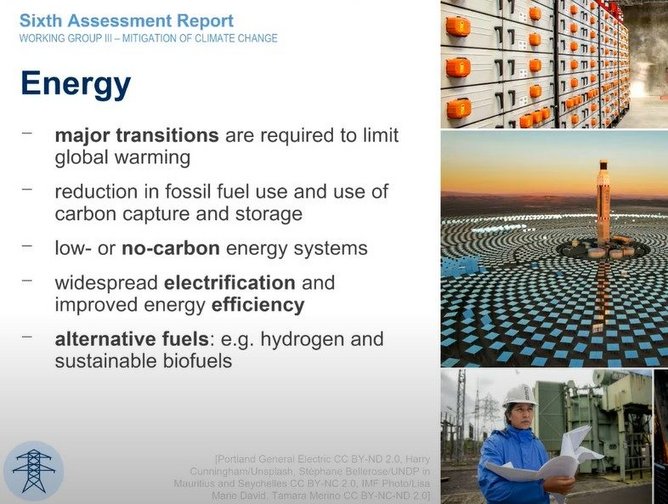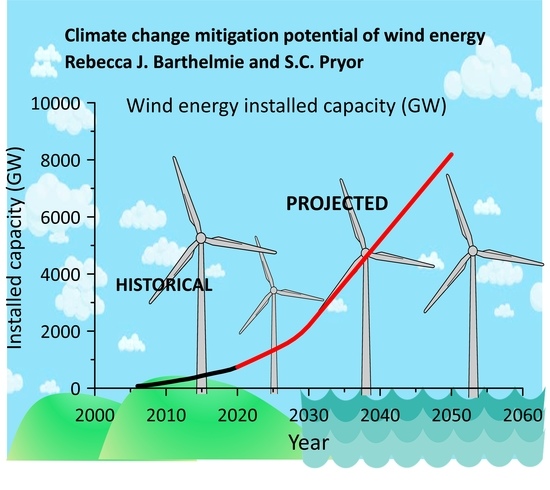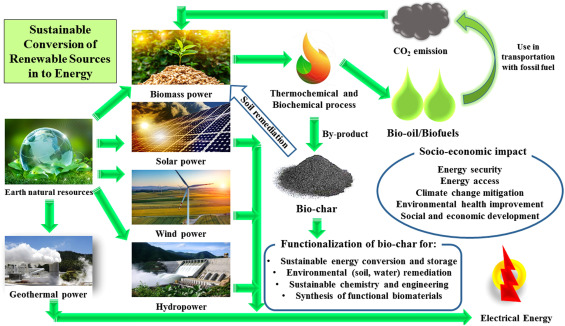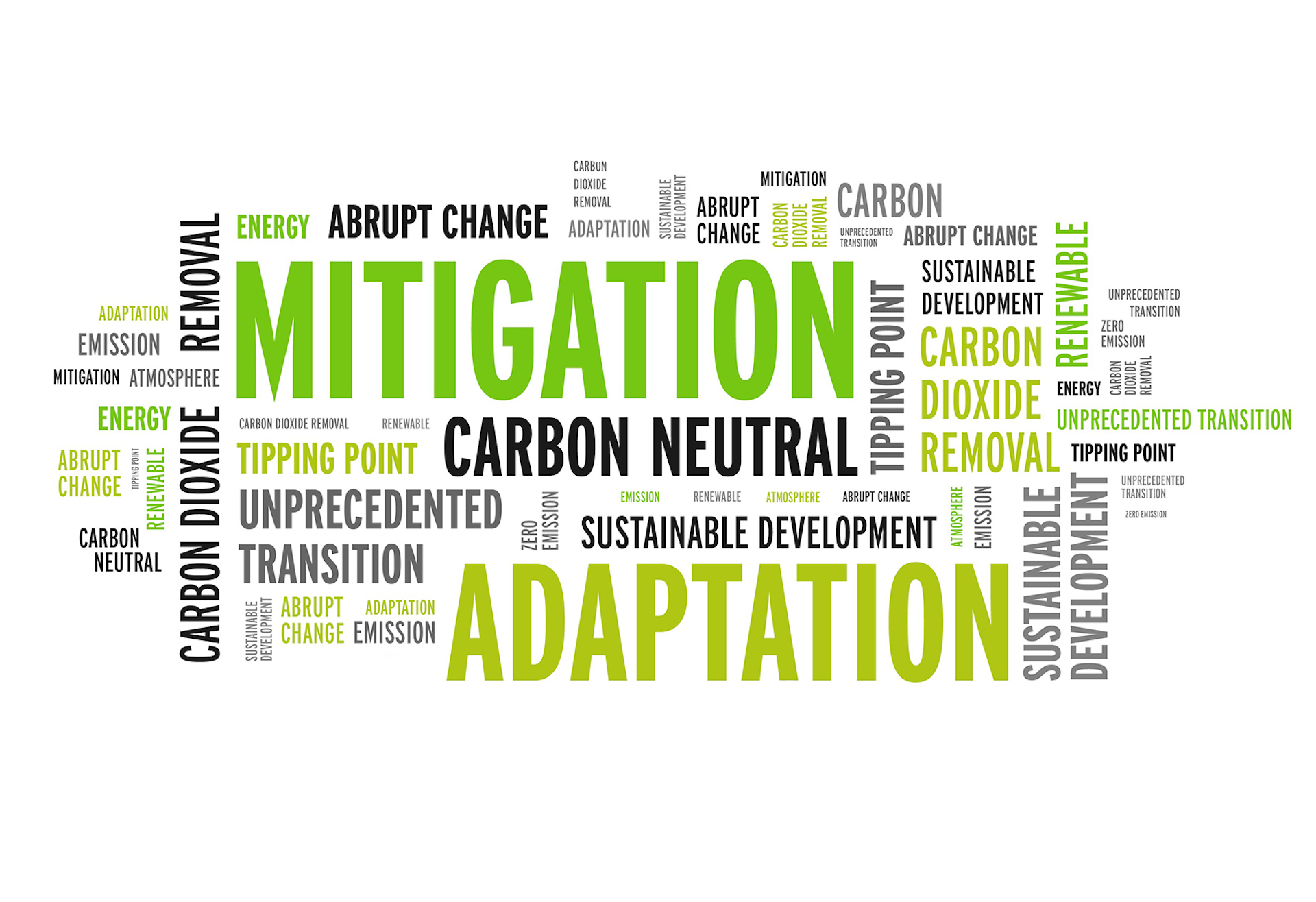Introduction
The global climate crisis is one of the most pressing challenges facing humanity today. With rising temperatures, extreme weather events, and the alarming loss of biodiversity, the need for immediate action to mitigate climate change has never been more apparent. In this context, batteries have emerged as a critical technology that can significantly contribute to reducing greenhouse gas emissions and building a sustainable future.
nullTo expand your knowledge on this subject, make sure to read on at this location: Review Technologies and perspectives for achieving carbon neutrality
Batteries have long been associated with powering our everyday devices, from smartphones to laptops. However, their role in addressing climate change extends far beyond convenience. Here’s how batteries are making a difference:
Batteries, often taken for granted as the powerhouses of our everyday gadgets, are stepping into a far more prominent role in the global fight against climate change. Their significance extends beyond the realm of convenience and touches upon several critical aspects of environmental preservation and sustainable living. Here’s an exploration of how batteries are indeed making a profound difference:
Clean Energy Storage: Batteries are instrumental in the efficient storage of clean energy generated from renewable sources like solar and wind. This capability addresses one of the biggest challenges facing renewable energy – intermittent availability. Batteries store surplus energy when the sun is shining or the wind is blowing and release it when needed, ensuring a consistent and reliable power supply. This contribution plays a pivotal role in reducing greenhouse gas emissions and lessening our reliance on fossil fuels.
Emission Reduction: By enabling the transition to electric vehicles (EVs), batteries are helping to drastically reduce emissions from the transportation sector. Unlike traditional internal combustion engines, EVs produce zero tailpipe emissions. As more consumers make the switch to electric vehicles powered by batteries, we move closer to cleaner and more sustainable mobility, reducing air pollution and mitigating the impact of transportation on climate change.
Energy Efficiency: Batteries are champions of energy efficiency. In various applications, from consumer electronics to industrial machinery, batteries store and release energy with minimal waste. This efficiency translates into lower energy consumption, a crucial factor in reducing carbon emissions and conserving valuable resources.
Grid Resilience: Advanced battery technologies contribute to grid resilience. They serve as valuable assets in balancing supply and demand, managing peak loads, and providing backup power during grid outages. This enhanced grid resilience ensures a more stable energy supply and reduces the likelihood of power interruptions during extreme weather events, ultimately promoting sustainability.
Energy Access: Batteries play a role in expanding energy access, particularly in remote or underserved areas. Portable battery-powered devices, solar home systems with battery storage, and off-grid solutions provide electricity to regions where traditional grid infrastructure is absent or unreliable. This access to clean and sustainable energy enhances living standards and supports economic development.
Circular Economy: Battery recycling and repurposing are critical components of a circular economy. Instead of discarding used batteries, recycling processes recover valuable materials like lithium, cobalt, and nickel. These materials can then be reused in new batteries, reducing the environmental impact of resource extraction and manufacturing.
Technological Innovation: The pursuit of more efficient and sustainable battery technologies has spurred innovation in materials science, manufacturing processes, and energy storage methods. These innovations not only benefit battery applications but also have broader implications for clean energy and environmental conservation.
Climate Resilience: Batteries contribute to climate resilience by providing backup power for critical infrastructure and essential services during extreme weather events and natural disasters. This resilience safeguards lives and property and minimizes the long-term environmental consequences of climate-related disasters.
In conclusion, batteries are emerging as pivotal tools in our collective efforts to combat climate change and transition to a more sustainable future. Their roles in clean energy storage, emission reduction, energy efficiency, and grid resilience, among others, underscore their significance in addressing the climate crisis. As we continue to advance battery technology and embrace its potential, we move closer to a world where sustainability is not just an aspiration but a reality, driven in part by the humble yet mighty battery.
You can also read more about this here: The evidence is clear: the time for action is now. We can halve …

Renewable energy sources like solar and wind power are essential for reducing our reliance on fossil fuels. Batteries play a crucial role in storing excess energy generated by renewables during times of high production and releasing it when demand is high or production is low. This ensures a stable and continuous supply of clean energy to the grid, reducing the need for fossil fuels and lowering greenhouse gas emissions.
The synergy between renewable energy sources like solar and wind power and battery technology forms a powerful alliance in our quest to transition to a sustainable energy future. Here’s a more in-depth exploration of how these two elements work in tandem to reshape our energy landscape:
Intermittent Energy Generation: Solar panels and wind turbines are highly dependent on weather conditions. They generate electricity when the sun shines or the wind blows but may produce little to no energy during adverse weather or nighttime. Batteries step in to bridge this gap by storing surplus energy produced during optimal conditions for later use.
Energy Storage: Batteries act as energy reservoirs, efficiently storing excess electricity. This surplus energy is typically captured during sunny days or windy periods when renewable generation exceeds demand. Without batteries, this excess energy may go to waste if not consumed immediately.
Peak Demand Management: One of the significant challenges for power grids is managing peak electricity demand, often occurring during hot summer afternoons or cold winter evenings. Battery storage systems can discharge stored energy during these peak periods, reducing the strain on the grid and preventing blackouts.
Grid Stability: Fluctuations in renewable energy generation can create grid instability. Battery technology provides a rapid response to these fluctuations, ensuring a consistent power supply. This stability is vital for the reliable operation of electrical grids.
Energy Smoothing: Batteries smooth out variations in renewable energy output, making it more predictable and manageable for grid operators. This predictability enhances the grid’s ability to accommodate higher levels of renewables.
Grid Decentralization: Battery-equipped homes and businesses become distributed energy resources, effectively decentralizing energy production and storage. This reduces the need for centralized power plants, including fossil fuel-based facilities.
Carbon Emission Reduction: The integration of batteries into renewable energy systems significantly reduces carbon emissions. By enabling the continuous use of clean energy, batteries displace the need for fossil fuel-based power generation, contributing to a greener and more sustainable grid.
Energy Access: In remote and off-grid areas, renewable energy paired with batteries provides access to reliable electricity. This access can be life-changing, enabling communities to power essential services, schools, and healthcare facilities.
Resilience: Batteries enhance energy resilience in the face of disasters. During power outages, whether caused by extreme weather events or other emergencies, battery systems can supply backup power to homes, hospitals, and critical infrastructure.
Transition to Electrified Transportation: The stored energy in batteries is not limited to powering homes but can also be used to charge electric vehicles (EVs). This promotes the electrification of transportation, reducing reliance on gasoline and diesel and further lowering emissions.
Economic Benefits: The coupling of renewable energy and batteries creates economic opportunities, from manufacturing and installation to grid management and energy services. This fosters job creation and stimulates economic growth.
In essence, batteries are the linchpin of the renewable energy revolution, enabling us to harness the full potential of clean energy sources like solar and wind. Their role in storing, managing, and delivering clean energy to homes, businesses, and grids is instrumental in reducing our dependence on fossil fuels, mitigating climate change, and fostering a sustainable energy future for generations to come.
Should you desire more in-depth information, it’s available for your perusal on this page: Global Energy Transformation: A Roadmap to 2050

The transportation sector is a significant contributor to greenhouse gas emissions. Electric vehicles (EVs) powered by advanced lithium-ion batteries offer a sustainable alternative to traditional internal combustion engine vehicles. As EV adoption increases, emissions from the transportation sector can be substantially reduced, leading to cleaner air and a healthier environment.
The transportation sector has long been a notable contributor to the environmental challenges we face, particularly in terms of greenhouse gas emissions. The proliferation of internal combustion engine vehicles, although convenient, has come at a significant cost to our environment. However, amidst this challenge, there is a beacon of hope: electric vehicles (EVs) powered by advanced lithium-ion batteries.
A Sustainable Revolution: EVs represent a profound shift in the transportation paradigm. Instead of relying on fossil fuels, they harness the power of advanced lithium-ion batteries to propel vehicles. These batteries store electrical energy generated from clean sources like wind, solar, or hydropower, offering a sustainable and environmentally friendly alternative to traditional gasoline and diesel vehicles.
Reducing Greenhouse Gas Emissions: The environmental benefits of EVs are striking. They produce zero tailpipe emissions, meaning no harmful pollutants are released into the air during operation. This immediately translates into cleaner air in urban areas and a reduction in the health problems associated with air pollution. Additionally, when charged with renewable energy, EVs have the potential to produce zero carbon emissions throughout their lifecycle.
Improved Energy Efficiency: EVs are inherently more energy-efficient than their internal combustion engine counterparts. They convert a larger portion of the electrical energy from the grid into motion, reducing energy waste and enhancing overall efficiency. This not only reduces the demand for electricity but also lowers the environmental impact of energy production.
Quiet and Low-Maintenance: EVs are known for their quiet operation, contributing to reduced noise pollution in urban environments. Furthermore, they have fewer moving parts compared to traditional vehicles, resulting in lower maintenance costs and a smaller environmental footprint associated with vehicle manufacturing and maintenance.
Supporting Renewable Energy Integration: The growth of EVs aligns with the broader transition to renewable energy sources. EVs can serve as a valuable energy storage resource, with their batteries capable of storing excess renewable energy when it’s abundantly available and releasing it when needed. This synergy between EVs and renewable energy reinforces the shift toward a cleaner, more sustainable energy landscape.
Charging Infrastructure: The expansion of EV adoption has spurred the development of charging infrastructure, making it increasingly convenient for individuals to embrace electric mobility. Fast-charging stations, coupled with advanced battery technology, are reducing charging times and alleviating range anxiety, making EVs a practical choice for a wider range of consumers.
Challenges and Future Innovations: While the benefits of EVs are clear, challenges remain, including battery production sustainability and charging infrastructure expansion. However, ongoing research and innovation in battery technology, recyclability, and infrastructure development are addressing these challenges and paving the way for an even more sustainable future for electric transportation.
In conclusion, electric vehicles powered by advanced lithium-ion batteries represent a transformative force in the quest for a cleaner, healthier, and more sustainable transportation sector. As EV adoption continues to rise, the reduction in greenhouse gas emissions will contribute significantly to mitigating climate change, improving air quality, and fostering a more environmentally responsible approach to mobility. This transition to EVs is not merely a change in transportation; it’s a pivotal step towards a greener and more sustainable future for our planet.
For additional details, consider exploring the related content available here California moves to accelerate to 100% new zero-emission vehicle …

Batteries are also key to improving energy efficiency in various sectors. In industrial processes, batteries can store excess energy during low-demand periods, making it available when needed, thus reducing the energy consumption of factories and facilities. This not only lowers energy bills but also decreases the associated emissions.
nullShould you desire more in-depth information, it’s available for your perusal on this page: Inflation Reduction Act Summary: Energy and Climate Provisions …

Grid resilience is crucial in the face of climate-related disasters. Batteries provide backup power and stabilize the grid during power outages, ensuring that critical infrastructure remains operational. This resilience minimizes disruptions and associated emissions during emergencies.
In an era marked by increasing climate-related disasters, the significance of grid resilience cannot be overstated. As our world grapples with more frequent and severe weather events, the integration of battery technology emerges as a critical strategy to fortify our energy infrastructure against these challenges.
Climate-related disasters, ranging from hurricanes and wildfires to extreme heatwaves and polar vortexes, can wreak havoc on power grids. High winds, heavy precipitation, and soaring temperatures can damage power lines, transformers, and substations, triggering widespread power outages. It is precisely in these moments of crisis that batteries shine as unsung heroes.
Battery systems, when seamlessly integrated into the grid, offer a lifeline during emergencies. They are the guardians of backup power, stepping in to fill the void left by traditional power sources when they falter. Hospitals, emergency response centers, and critical facilities depend on this backup power to maintain life-saving services. Medical equipment, climate control systems, and lighting continue to function, ensuring the welfare of patients and the effectiveness of first responders.
Beyond providing backup power, batteries also contribute to the stability of the grid itself. During power outages, the sudden loss of electricity generation can lead to frequency and voltage fluctuations. These fluctuations can cause further damage to the grid and hinder the restoration of power. Batteries act as stabilizers, injecting power back into the grid at the right frequency and voltage, thereby minimizing disruptions and facilitating the grid’s recovery.
The environmental ramifications of grid resilience powered by batteries are substantial. When disasters strike, the emissions associated with backup power sources, such as diesel generators, are a significant concern. Batteries, with their clean and silent operation, provide an eco-friendly alternative. By reducing the reliance on fossil fuel-based backup generators, we mitigate the emissions that can exacerbate climate-related disasters in the first place.
Furthermore, grid resilience helps communities bounce back faster from disasters, reducing the economic and social costs associated with extended power outages. Businesses can resume operations sooner, essential services can continue uninterrupted, and residents can recover a sense of normalcy more rapidly.
In essence, battery technology represents a linchpin of resilience in the face of climate-related disasters. It is a tool for safeguarding critical infrastructure, minimizing disruptions, and reducing emissions when they are needed most. As we continue to grapple with the effects of a changing climate, batteries stand as a beacon of hope, offering a path toward a more resilient and sustainable energy future, where our grids are fortified, our communities are protected, and our planet is safeguarded.
Should you desire more in-depth information, it’s available for your perusal on this page: The Long-Term Strategy of the United States, Pathways to Net-Zero …

To maximize the impact of batteries in climate change mitigation, investment in battery innovation is essential. Researchers are continuously working to improve battery technology by increasing energy density, reducing cost, and enhancing recyclability. These advancements will make batteries more accessible and environmentally friendly, further accelerating their adoption.
The pivotal role of batteries in the fight against climate change underscores the urgent need for sustained investment in battery innovation. The future of our planet depends on our ability to harness the full potential of energy storage, and this journey is paved with continuous research and development efforts aimed at pushing the boundaries of battery technology. Here, we delve into the critical areas of advancement that promise to revolutionize the battery landscape, making these energy storage devices more accessible, cost-effective, and environmentally friendly.
Enhancing Energy Density: A primary focus of battery innovation is the quest for higher energy density. Batteries with higher energy density can store more energy in a given space or weight, making them longer-lasting and more efficient. Researchers are exploring a myriad of materials and designs, from solid-state batteries to advanced lithium-ion configurations, in pursuit of this goal. These advancements will translate into batteries that power electric vehicles for longer distances, store more renewable energy, and provide extended backup power during emergencies.
Reducing Costs: Cost has long been a barrier to the widespread adoption of batteries. However, ongoing innovation is driving down the cost of battery production. This involves optimizing manufacturing processes, sourcing more affordable materials, and achieving economies of scale through mass production. As battery costs decrease, they become more accessible to a broader range of applications, from residential energy storage to grid-scale deployments, accelerating the transition to clean energy.
Enhancing Recyclability: The sustainability of batteries is a critical consideration. Researchers are actively working to improve the recyclability of battery materials, reducing waste and environmental impact. Recycling processes are being refined to recover valuable materials like lithium, cobalt, and nickel from used batteries, reducing the need for new resource extraction and lowering the overall carbon footprint of battery production.
Safety Advancements: Ensuring the safety of battery technology remains paramount. Innovations in safety mechanisms, thermal management, and fail-safes are continuously evolving to prevent thermal runaway and improve overall battery safety. These advancements are crucial, especially as batteries find applications in electric vehicles, grid storage, and other high-demand scenarios.
Accessibility for All: Battery innovation is not limited to high-end applications. Researchers are actively developing low-cost, reliable battery solutions that can benefit underserved communities and remote regions. This inclusivity ensures that the benefits of battery technology extend to all, regardless of their economic status or geographic location.
Policy and Investment: It’s worth noting that the advancement of battery technology is often catalyzed by government policies and private sector investments. Incentives, research grants, and collaboration between academia and industry play pivotal roles in accelerating innovation and driving progress in the battery sector.
In conclusion, the journey toward maximizing the impact of batteries in mitigating climate change is marked by relentless innovation. By increasing energy density, reducing costs, enhancing recyclability, and prioritizing safety, researchers are creating a future where batteries are not just a solution but a catalyst for sustainable and clean energy systems. These innovations will not only transform our energy landscape but also empower individuals, communities, and nations to take charge of their energy destiny, safeguard the environment, and accelerate the transition to a greener and more sustainable future.
Explore this link for a more extensive examination of the topic: Lithium-ion battery demand forecast for 2030 | McKinsey

Governments, businesses, and individuals all have a role to play in harnessing the potential of batteries for climate change mitigation:
The harnessing of battery technology for climate change mitigation is a collective effort that involves governments, businesses, and individuals. Each of these stakeholders plays a unique and vital role in driving the adoption and innovation of battery solutions that can significantly contribute to reducing our carbon footprint and combatting climate change.
Governments: Governments are instrumental in setting the stage for widespread battery adoption. They can enact policies and regulations that incentivize the development and deployment of clean energy technologies, including battery storage. This includes offering financial incentives such as tax credits or subsidies for the purchase of electric vehicles and home energy storage systems. Governments can also implement stringent emissions standards, encouraging industries to transition to battery-powered alternatives. Furthermore, investing in research and development and supporting infrastructure development for charging and energy storage facilities are crucial steps governments can take to accelerate the transition to battery-powered solutions.
Businesses: The business sector has a pivotal role to play in advancing battery technology. Corporations can drive innovation through research and development investments, as well as by adopting sustainable business practices that prioritize the use of clean energy and energy-efficient technologies. For instance, businesses can transition their fleets to electric vehicles, invest in on-site renewable energy generation paired with energy storage, and implement smart grid solutions that optimize energy use. Furthermore, companies involved in battery manufacturing can focus on sustainable and responsible sourcing of materials, reducing waste in production, and recycling or repurposing batteries at the end of their life cycles.
Individuals: Individuals also have a critical role in the transition to a more sustainable energy landscape. Consumer choices, such as purchasing electric vehicles, using residential solar panels with energy storage, and embracing energy-efficient appliances, can collectively reduce energy consumption and greenhouse gas emissions. Furthermore, adopting energy-conscious behaviors like reducing energy waste, optimizing home energy management, and participating in demand response programs can contribute to a more sustainable energy grid. By making informed choices and advocating for clean energy solutions, individuals can help drive the demand for battery technology and accelerate its adoption.
In conclusion, addressing climate change through the utilization of battery technology requires a multi-pronged approach that involves the active participation of governments, businesses, and individuals. Collaboration and commitment from all these stakeholders are essential to harnessing the full potential of batteries as a powerful tool in the fight against climate change. By working together, we can create a more sustainable and resilient energy ecosystem that benefits both the environment and society as a whole.
For a comprehensive look at this subject, we invite you to read more on this dedicated page: BUILDING A CLEAN ENERGY ECONOMY:

Governments can incentivize the adoption of renewable energy and electric vehicles through subsidies, tax credits, and regulations that promote clean energy solutions.
nullShould you desire more in-depth information, it’s available for your perusal on this page: FACT SHEET: President Biden to Catalyze Global Climate Action …

Individuals and businesses can adopt sustainable practices such as using energy-efficient appliances, reducing energy consumption, and recycling batteries properly to minimize their environmental footprint.
Embracing sustainable practices is not just a responsibility; it’s a powerful way for individuals and businesses to make a positive impact on the environment. By implementing a combination of thoughtful strategies, we can significantly reduce our environmental footprint.
One of the most effective steps towards sustainability is the adoption of energy-efficient appliances and technologies. These innovations are designed to maximize functionality while minimizing energy consumption. From LED lighting to Energy Star-rated appliances, making mindful choices when selecting equipment can lead to substantial energy savings. These reductions not only decrease electricity bills but also contribute to a greener future by reducing overall energy demand and associated greenhouse gas emissions.
Additionally, reducing energy consumption through lifestyle changes and behavioral adjustments is a sustainable practice that yields impressive results. Simple actions like turning off lights when not in use, optimizing thermostat settings, and unplugging devices when they’re not needed can lead to significant energy savings over time. It’s not just about minimizing energy bills; it’s about conserving resources and lessening the strain on our planet’s finite energy sources.
Proper battery recycling is another critical component of environmental stewardship. Batteries contain materials that can be harmful to the environment if disposed of improperly. By recycling batteries at designated collection points, we ensure that these materials are handled and disposed of safely, minimizing the risk of soil and water contamination. Furthermore, recycling batteries allows for the recovery of valuable materials, reducing the need for mining and resource extraction, which can have its own ecological impacts.
Moreover, adopting sustainable practices extends beyond energy efficiency and battery recycling. It involves conscious decisions in various aspects of life and business. For instance, reducing water usage, minimizing waste generation, and supporting eco-friendly products and packaging all contribute to a more sustainable and responsible way of living.
Businesses, too, can play a pivotal role in sustainability by implementing energy-efficient practices, reducing waste in production processes, and adopting responsible supply chain management. Not only do these initiatives reduce operating costs and enhance brand reputation, but they also align with the broader global effort to combat climate change and preserve our natural resources.
In conclusion, the adoption of sustainable practices by individuals and businesses is a tangible and effective way to reduce our environmental footprint. Whether it’s through energy efficiency, responsible resource management, or recycling, these actions collectively contribute to a more sustainable and environmentally conscious world. By making sustainable choices a part of our daily lives and business operations, we not only improve our own well-being but also contribute to the health and longevity of our planet for generations to come.
Should you desire more in-depth information, it’s available for your perusal on this page: BUILDING A CLEAN ENERGY ECONOMY:

Conclusion
Batteries are not just energy storage devices; they are a linchpin in the fight against climate change. By facilitating the integration of renewable energy, enabling electric mobility, enhancing energy efficiency, and ensuring grid stability, batteries are a powerful tool for reducing greenhouse gas emissions. To secure a sustainable future, we must invest in battery innovation, adopt clean energy solutions, and embrace responsible practices that harness the full potential of this transformative technology. The time to act is now, and batteries are lighting the way towards a greener, more sustainable world.
Expanding on the idea that batteries are a linchpin in the fight against climate change, let’s delve deeper into how they are driving change and why they represent a beacon of hope for a more sustainable future:
Unlocking Renewable Energy Potential: Batteries are pivotal in unlocking the full potential of renewable energy sources like solar and wind. These sources are intermittent, meaning they produce electricity only when the sun shines or the wind blows. Batteries store excess energy generated during optimal conditions and release it when needed, smoothing out fluctuations in energy supply. This not only ensures a continuous and reliable power supply but also maximizes the utilization of clean, green energy sources.
Elevating Electric Mobility: The transportation sector accounts for a significant share of global greenhouse gas emissions. Batteries are playing a central role in electrifying this sector, making electric vehicles (EVs) more accessible and appealing to consumers. With longer ranges and faster charging times, modern EV batteries are making sustainable transportation a reality. By transitioning to EVs, we reduce emissions, decrease air pollution, and mitigate the environmental impact of our daily commutes.
Empowering Energy Efficiency: In addition to supporting renewable energy and EVs, batteries contribute to enhancing energy efficiency in various industries. For instance, they enable peak shaving in commercial buildings by storing energy during off-peak hours and supplying it during high-demand periods, reducing energy costs and emissions. Industrial processes can also benefit from battery systems that optimize energy usage, reducing waste and environmental impact.
Building Resilience in the Face of Climate Change: Climate change brings with it an increase in extreme weather events, including hurricanes, wildfires, and severe storms. Batteries are instrumental in ensuring grid resilience during these crises. By providing backup power and stabilizing the grid, batteries help maintain essential services and critical infrastructure when traditional power sources fail. This resilience not only saves lives but also reduces the disruption and environmental damage caused by prolonged outages.
Investing in Innovation: The journey to a sustainable future requires continuous investment in battery innovation. Researchers are constantly working on developing next-generation batteries with improved energy density, longer lifespans, and reduced environmental impact. These advancements will make batteries more affordable, efficient, and eco-friendly, accelerating their adoption across various sectors.
In conclusion, batteries are not merely passive energy storage devices; they are dynamic agents of change in the battle against climate change. They underpin the transition to clean energy, the electrification of transportation, and the enhancement of energy efficiency. Furthermore, they bolster resilience in the face of climate-related challenges. To secure a sustainable future, it is imperative that we prioritize battery innovation, embrace clean energy solutions, and adopt responsible practices. With batteries lighting the way, we can chart a course toward a greener, more sustainable world and leave a positive legacy for generations to come. The time for action is now, and batteries are at the forefront of this transformative journey.
Explore this link for a more extensive examination of the topic: Strategies to achieve a carbon neutral society: a review …
More links
For a comprehensive look at this subject, we invite you to read more on this dedicated page: Factcheck: How electric vehicles help to tackle climate change
